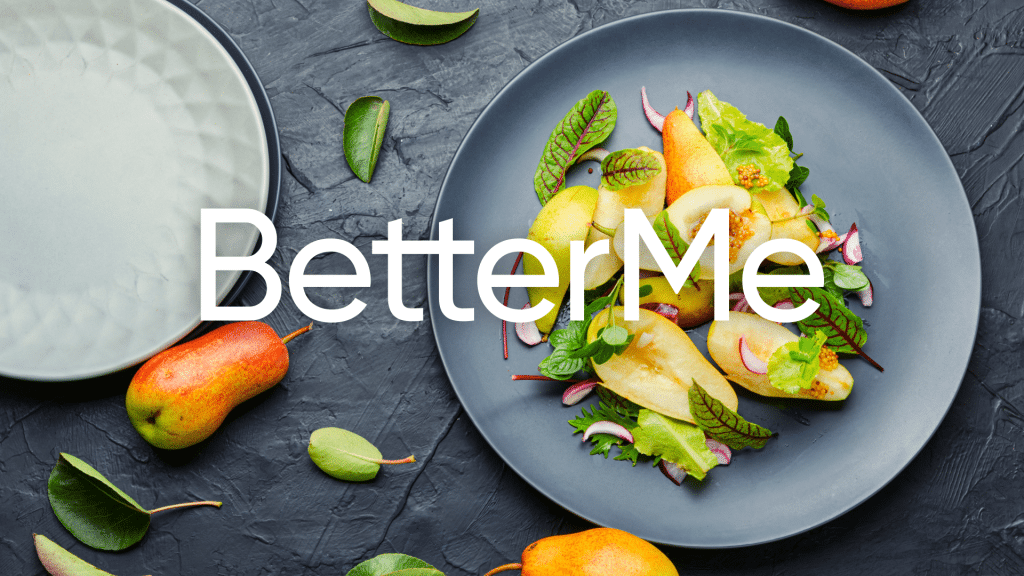Nutrition is important for everyone. It is essential for our growth, development, and overall health. Despite this, many people do not understand the different types of nutrients and how they work in our bodies. One way to look at it is that there are six main groups of nutrients: carbohydrates, fats, proteins, vitamins, minerals, and water. Each nutrient has a specific role to play in maintaining our health. In this article we will take a closer look at each nutrient group and explain why they are important for our health.
Get your personalized
meal plan!
1. Carbohydrates
Carbohydrates are one of the most important nutrients. They are the body’s main source of energy and are necessary for proper brain function (5). Depending on their chemical structure, some carbohydrates can also have other functions in the body such as promoting gut health or acting as a prebiotic.
There are two types of carbohydrates: simple and complex. Simple carbohydrates are made up of one or two sugar molecules and are found in foods such as candy, cake, and soda. Complex carbohydrates are made up of three or more sugar molecules in a chain (also called starch) and are found in foods such as bread, pasta, and rice (9).
The difference between these two types of carbohydrates matters because complex carbohydrates are broken down more slowly by the body and provide a steady source of energy, while simple carbohydrates are broken down quickly and can cause quicker spikes in blood sugar levels.
For good health, complex carbohydrates should make up the majority of your carbohydrate intake (14). This is not to say that simple carbohydrates are bad for you, but rather that complex carbohydrates should be the foundation of nutrition.
2. Protein
Proteins are essential for the growth and repair of all tissues in the body. They are also necessary for the production of enzymes, hormones, and other substances that regulate bodily functions. Proteins are made up of smaller units called amino acids (10).
There are two types of amino acids: essential and non-essential. Essential amino acids cannot be produced by the body and must be obtained from food. Non-essential amino acids can be produced by the body, but they may not be in sufficient quantities to meet the body’s needs (3).
Protein sources can be classified as complete or incomplete. Complete proteins contain all of the essential amino acids in the correct ratio for the body to use them effectively (11).
Animal products such as meat, eggs, and dairy are typically complete proteins. Incomplete proteins lack one or more of the essential amino acids and are typically found in plant-based foods (11).
Most people can get all of the protein they need by eating a variety of complete and incomplete proteins throughout the day. However, some people may require more protein than others depending on their age, activity level, and other factors.
Read More: Sea Vegetables: Nutritional Powerhouse Or Overrated Health Food?
3. Fats
Fats are essential for the absorption of fat-soluble vitamins, the transport of molecules in and out of cells, and the insulation of nerves. They also play a role in hormone production and cell signaling (13).
There are four types of fats: saturated, unsaturated, trans, and essential (1). Saturated fats are solid at room temperature and are typically found in animal products such as butter, cheese, and meat.
Unsaturated fats are liquid at room temperature and are found more in plant-based oils such as olive oil and canola oil.
Trans fats are created when vegetable oils are chemically processed and are found in processed foods such as crackers, cookies, and snack cakes. These artificial trans fats are now banned in many countries because they pose serious health risks. There are also some naturally occuring trans fats in foods, but these are not as dangerous.
Essential fats cannot be produced by the body and must be obtained from food. They are specific types of unsaturated fats which can be found in fatty fish such as salmon and mackerel, as well as certain plant oils.
Not all fats are equal. Saturated should be limited in the diet, while unsaturated and essential fats should be included more. Artificial trans fats should be avoided completely.
This is because saturated and trans fats can raise cholesterol levels and increase the risk of heart disease, while unsaturated and essential fats can have protective effects on heart health (8) (12) (15).
4. Vitamins
Vitamins are essential for the proper function of all bodily systems. They act as cofactors in biochemical reactions, help to protect cells from damage, and are necessary for the absorption of other nutrients (6).
There are two types of vitamins: water-soluble and fat-soluble. Water-soluble vitamins dissolve in water and are not usually stored by the body in great amounts. This means that they need to be consumed daily to prevent deficiency.
Fat-soluble vitamins are stored in the body’s tissue and can be used when needed (7).
Water-soluble vitamins include B-vitamins and vitamin C (17). Fat-soluble vitamins include vitamins A, D, E, and K. The main sources of vitamins are fruits, vegetables, grains, legumes, animal products, fortified foods, and supplements.
Most people get the vitamins they need from a balanced diet. However, some people may need to take supplements to ensure they are getting enough of certain vitamins.
BetterMe app will kick you out of the mental funk, shake off your extra weight, rid you off your energy-zapping habits, and help you sculpt the body of your dreams. Intrigued? Hurry up and change your life for the better!
5. Minerals For Healthy Nutrition
Minerals are essential for the proper functioning of all bodily systems. They act as cofactors in biochemical reactions, help to maintain fluid balance, and are necessary for the absorption of other nutrients (4).
There are two types of minerals: macrominerals and microminerals. Macrominerals are needed in relatively large amounts and include calcium, phosphorus, magnesium, sodium, potassium, chloride, and sulfur.
Microminerals are needed in small amounts and include iron, manganese, copper, iodine, zinc, selenium, molybdenum, and chromium.
The main sources of minerals are also fruits, vegetables, grains, legumes, animal products, fortified foods, and supplements.
6. Water
Water is essential for the proper function of all bodily systems. It makes up approximately 60% of the human body and is involved in many processes including digestion, absorption, circulation, and excretion (16).
Water can be obtained from food and beverages, but the majority of it must come from drinking water. The recommended daily intake of water is 8-10 cups per day. Your water needs may be higher or lower depending on your activity level, climate, and other factors.
Read More: Hummus Bowl Nutrition And Recipes
How To Balance Your Nutrition
You can use the MyPlate food guide to help you balance your nutrition (18). This guide, created by the United States Department of Agriculture (USDA), shows the recommended proportions of each food group for a healthy diet (2).
The MyPlate food guide includes the following food groups:
- Fruit: to provide vitamins, minerals, and fiber
- Vegetables: to provide vitamins, minerals, and fiber
- Grains: to provide carbohydrates, vitamins, minerals, and fiber
- Protein: to provide amino acids, vitamins, minerals, and energy
- Dairy: to provide calcium, phosphorus, and vitamin D
- Oils: to provide essential fatty acids and vitamins
To ensure you are getting the nutrients you need it is important to eat a variety of foods from each food group. It is also important to choose nutrient-dense foods, which are foods that provide a lot of nutrients for their calories.
For example, a nutrient-dense food would be a piece of fruit instead of fruit juice or a baked potato instead of french fries.
Your goal should be to eat a variety of nutrient-dense foods from each food group in order to get the nutrients you need for good health.
MyPlate is a reminder to find your healthy eating style and build it throughout your lifetime. Everything you eat and drink matters. The right mix can help you be healthier now and in the future.
It is also important to pay attention to portion sizes. Just because a food is healthy does not mean that you can eat as much of it as you want. Eating too much of even the healthiest foods can lead to weight gain and other health problems.
Finally, remember that nutrition is just one part of a healthy lifestyle. Be sure to also get regular exercise, get enough sleep, and manage stress to be your healthiest self.
Lean and toned up body isn’t just a far-fetched fantasy. Check out the BetterMe app and watch it propel your weight loss journey into high gear!
The Bottom Line
You can break essential nutrients down into six main nutrition groups: carbohydrates, proteins, fats, vitamins, minerals, and water. All of these nutrients are essential for the proper function of the body. A balanced diet should include all six of these nutrients in the right proportions. MyPlate is a helpful guide that can be used to make sure you are getting the right mix of nutrients from your diet.
DISCLAIMER:
This article is intended for general informational purposes only and does not serve to address individual circumstances. It is not a substitute for professional advice or help and should not be relied on for making any kind of decision-making. Any action taken as a direct or indirect result of the information in this article is entirely at your own risk and is your sole responsibility.
BetterMe, its content staff, and its medical advisors accept no responsibility for inaccuracies, errors, misstatements, inconsistencies, or omissions and specifically disclaim any liability, loss or risk, personal, professional or otherwise, which may be incurred as a consequence, directly or indirectly, of the use and/or application of any content.
You should always seek the advice of your physician or other qualified health provider with any questions you may have regarding a medical condition or your specific situation. Never disregard professional medical advice or delay seeking it because of BetterMe content. If you suspect or think you may have a medical emergency, call your doctor.
SOURCES:
- A healthy approach to dietary fats: understanding the science and taking action to reduce consumer confusion (2017, biomedcentral.com)
- Back to Basics: All About MyPlate Food Groups (2021, usda.gov)
- Biochemistry, Essential Amino Acids (2022, ncbi.nlm.nih.gov)
- Biochemistry, Nutrients (2022, ncbi.nlm.nih.gov)
- Carbohydrates as a source of energy (1994, academic.oup.com)
- Classification of Vitamins and Minerals – Nutrition: Science and Everyday Application (n.d., openoregon.pressbooks.pub)
- Fat-Soluble Vitamins – Diet and Health (1989, ncbi.nlm.nih.gov)
- Fatty Acids and Cardiovascular Risk. Evidence, Lack of Evidence, and Diligence (2020, mdpi.com)
- Physiology, Carbohydrates (2021, ncbi.nlm.nih.gov)
- Protein Function – Molecular Biology of the Cell (2002, ncbi.nlm.nih.gov)
- Protein – Which is Best? (2004, ncbi.nlm.nih.gov)
- Saturated Fatty Acids and Risk of Coronary Heart Disease: Modulation by Replacement Nutrients (2010, link.springer.com)
- The Functions of Fats – Nutrition: Science and Everyday Application (n.d., openoregon.pressbooks.pub)
- The scientific basis for healthful carbohydrate profile (2017, tandfonline.com)
- Trans fatty acids and coronary heart disease (2006, ncbi.nlm.nih.gov)
- Water, hydration, and health (2012, academic.oup.com)
- Water-Soluble Vitamins – Diet and Health (1989, ncbi.nlm.nih.gov)
- What is MyPlate? (n.d., myplate.gov)











